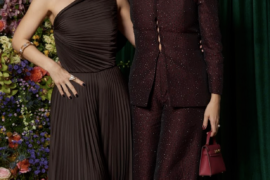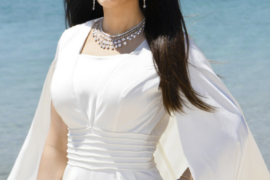In an unpublished and unofficial guidebook, lie jewellery’s rules of etiquette of unknown provenance. Guideline One reads, “wear earrings in pairs never combine spares.” “Don your jewellery, without boasting blatantly,” Guideline Two’s take on tasteful opulence. And then there is Guideline Three – “never mix metals.” Concise, yet profoundly impactful. For years, the sheer idea of mixing a buttery yellow with rose or white gold has been shunned, with wearers alleviating the potential of breaking the silent rule, with a swift chain, bangle or ring exchange when momentarily broken. Perhaps the fascination with monotone metals is grounded in their aesthetically safe allure. Still, the question of whether to combine metals or not, should be dictated by taste, and not confined to hearsay. The modus operandi of how metal mingling is possible is a glance away.
For the sceptics, a first foray into the world of metal mixing is through pieces in which the stacking, layering or pairing are in-built – an infallible quest. The likes of Spinelli Kilcollin and Sidney Garber do just that. Both designers employ an array of smoothly gliding ringlets and bands over each other, to reveal an ever-changing interplay of golden slithers. Tiffany & Co.’s latest Lock bracelet – the piece on every jewellery fiend’s tongue – too juxtaposes golden duos to reveal their implicitly underlying unity through shape. Of course, nonother than Buccellati have been steadfastly wedded to combining metals, with any piece drenched in their iconic rigato finish being the ultimate crowd pleaser. Moreover, two-tone perching serpent earrings and the iconic Chevalier ring by Azza Fahmy, whose visual DNA’s foundation is rooted in the melange of metals, are the ideal commencement pieces for said aesthetic.
For the optimists and the enthusiasts buoyed by the excitement of delving into unknown jewellery territory – fret not. When disrupting the tonality of a ring, bangle or earring curation – order can be restored in one of many ways. Opting for a motif or theme that is echoed throughout, for example geometric shapes or florals, undoubtedly balances the look effortlessly. Alternatively, one might consider integrating a particular texture or finish such as smooth, hammered or pavé elements to marry the pieces together. Ultimately, to achieve a sartorial curation of jewellery, indeed, a recurring design element that unifies the pieces together is advisable – not necessarily colour. The birth of another rule?
Text by Jessy A.




